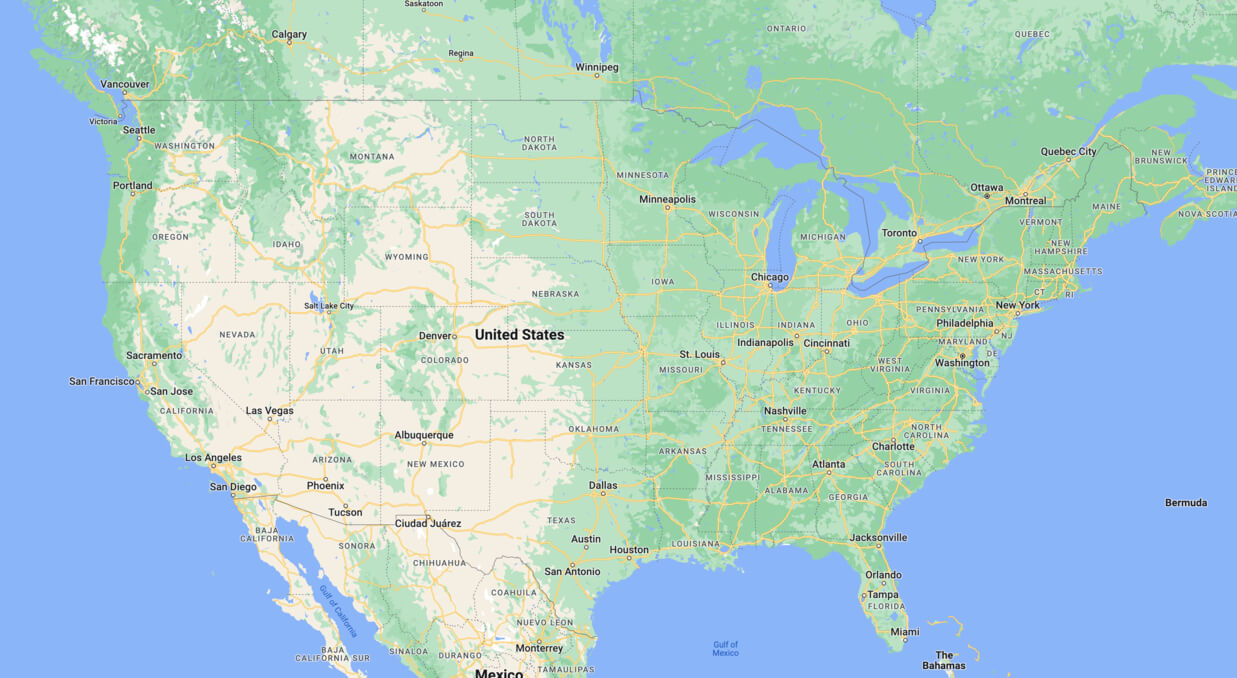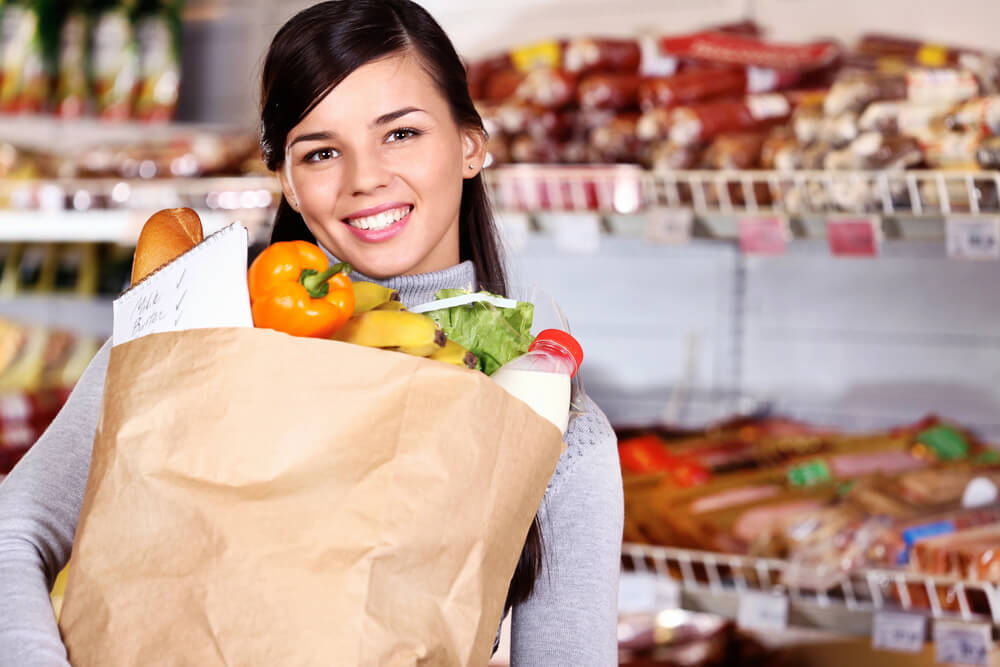Food insecurity is on the rise, and surging gas and food prices don't help. Knowing how and where to get free food is crucial when you’re struggling with money.
Food prices are up more than 20% since 2020 and inflation is not slowing down1.
If you’re struggling to feed your family and need food right now, this post can help. We've gathered this list of resources to help you find free food right in your own community.
- Immediate food assistance if you are hungry now
- Churches
- Food banks
- Food pantries
- Government programs for free food
- Businesses that accept your EBT card
- Grocery stores offering free groceries
- Nonprofit organizations
- Universities
Where can I get free food?
1. Immediate food assistance if you are hungry now

Here is advice from the federal government:
- Call 211 to see if there are any local programs
- Call the USDA National Hunger Hotline at 1-866-3-HUNGRY (1-866-348-6479) or 1-877-8-HAMBRE (1-877-842-6273)
- Contact local community or religious organizations
2. Churches

Churches and religious institutions often run food pantries, soup kitchens, sponsor food giveaways, or have food outreach programs in the communities they serve. You can do a Google search for “food pantries near me” or “churches near me” to see what is available in your area.


Large organizations like Catholic Charities USA and The Salvation Army run food pantries in local communities nationwide.
Depending on what the church or religious organization offers, you might be able to get a hot meal on site or healthy groceries that you can take home to feed your family.
3. Food banks

Some food banks operate during times of crisis, while others are available for everyday needs. Food banks are often run by community organizations, religious institutions, and even private citizens.
Some food banks, like White Center Food Bank in Seattle, Wa., are set up like grocery stores to offer a shopping experience. They provide fresh produce, milk, eggs, and meat, in addition to non-perishable items.
While every food bank has different requirements, you’ll generally need to show:
- A state-issued ID
- Current mail to prove residency
- Statements of household income
- Proof of TANF, SSI, WIC, or SNAP benefits
However, some food banks require very little, if any, information. To learn the exact qualifications for food banks in your area, you’ll need to get in touch with your local food bank.
To locate food banks in your community, try a Google search for “food banks near me.”

Feeding America
Feeding America is a nationwide resource for free food for children and adults in every state. The organization boasts 200 food banks and 60,000 food pantries. You can get free food in a confidential manner, but you’ll need to register before or when you arrive.
If you are concerned about transportation or exposure to COVID-19, inquire about contact-free options, home delivery, or drive-through locations.
Some food banks offer a market-style shopping experience:
4. Food pantries

Just like food banks, food pantries offer free food to people in need. Some are open daily, while others function on specific days of the week. Food pantries generally give out pre-packaged boxes of food and other food freebies, though some may offer a full shopping experience.
Thanks to technology, food pantries like Open Table in Maynard, Mass., invite local residents to order free food online. This innovative approach speeds the food pickup process. Instead of waiting for hours in line, families can drive up and pick up their pre-placed orders.
There are also community pantries built by good Samaritans like the Little Free Pantry network. These are small, standalone boxes where people place non-perishable food items for anyone in need, no questions asked.
FoodPantries.org
Looking for food pantries in your area? Start with FoodPantries.org, an online search engine to find food pantries, food banks, soup kitchens, and subsidized groceries in 50 states and the District of Columbia. Know a food pantry that isn’t listed? You can fill out a form on the site to have it added to the database.
LittleFreePantry.org
The Little Free Pantry network is a grassroots movement of good Samaritans in neighborhoods across the nation. Modeled after the Little Free Library, a wooden box built on a post with free books, the movement began in 2016 when Jessica McClard set up the first box. These are small, standalone boxes where neighbors can take or share non-perishable food items.
There are hundreds of locations. You can use the Little Free Pantry map to search for one near you.
5. Government programs for free food

If you meet income eligibility requirements, you can apply for government assistance to get free food.
There are a variety of federal programs in place to help feed children at home, in school, and after school, including:
SNAP
The Supplemental Nutrition Assistance Program (SNAP) allows low-income households to purchase food in grocery stores, retail stores, farmers’ markets, and some restaurants on a limited basis in a handful of states. SNAP benefit payments are loaded onto an Electronic Benefit Transfer (EBT) card for use in stores.
While still in developmental stages, some states are part of a pilot to accept SNAP benefits online.
Double-Up Food Bucks
This program is in about half the states and doubles your SNAP benefits for fruits and vegetables.
WIC
The Special Supplemental Nutrition Program for Women, Infants, and Children (WIC) provides nutritious food and formula to low-income women and their children, from infancy up to age 5. The program also supports pregnant and nursing mothers.
There is a list of WIC-approved foods, chosen for their nutritional value, including vegetables, meat, beans, and whole wheat bread. You can get these free foods at participating retail locations using a WIC check or card (depending on your state).
WIC is offered in all 50 states, 34 Indian Tribal Organizations, the District of Columbia, American Samoa, Guam, the Northern Mariana Islands, Puerto Rico, and the Virgin Islands.
To determine eligibility, applicants must demonstrate financial need, lack of nutritional resources, and proof of residency. To get free food using WIC benefits, you must apply at your local WIC agency.
Commodity Supplemental Food Program (CSFP)
The USDA CSFP is a federal program helping low-income seniors get better access to healthy groceries by offering a free food package that includes items like shelf-stable milk, juice, oats cereal, rice, peanut butter, canned goods and dry beans.
Eligibility requirements:
- U.S. resident (within the 50 states or on tribal lands)
- 60 or over
- At or below 130% of the federal poverty guidelines for income
Contact your local USDA office to get more information.
National School Lunch Program (NSLP)
The USDA NSLP is a federal program providing daily, low-cost or free school lunches in public or nonprofit private schools and other eligible learning facilities.
For participating schools, applications are available at school or through your school district at any time during the school year.
Eligible children must be 18 years old or younger and be enrolled in a K-12 school.
If you already receive benefits like the Supplemental Nutrition Assistance Program (SNAP), Head Start, the Special Supplemental Nutrition Program for Women, Infants, and Children (WIC) or are in foster care or homeless, your child(ren) may be eligible.
You must meet the 2023/2024 school year annual income requirements.
School Breakfast Program (SBP)
The USDA SBP provides daily, free or reduced-price breakfast to children in schools and residential childcare facilities. There is no application process. If your child is eligible for NSLP or other programs like SNAP or Head Start, they can get breakfast from the SBP.
Children from families with incomes at or below 130% of the federal poverty level (FPL) are eligible for free meals, and those between 130-185% qualify for reduced prices. The same income criteria for the NSLP determines eligibility for SBP.
Seniors Farmers’ Market Nutrition Program (SFMNP)
Food budgets are often tight for low-income households, but if you are a senior and meet income requirements, you can get free, healthy groceries at local participating farms, farmers’ markets, roadside stands, and community supported agriculture (CSA) programs by using SFMNP coupons.
Eligibility requirements:
- Resident of a participating state or tribal land
- 60 years of age or older
- Annual household income not over 185% of the federal poverty guidelines
Contact your local USDA office to learn more.
Special Milk Program (SMP)
If your child is eligible to receive free meals at school through the NSLP or SBP, they can also get free milk from the SMP. There is no application. To get free milk, you will need proof of eligibility for NSLP or SBP.
Summer Food Service Program (SFSP)
During the summer, your child can still have access to nutritious meals through the SFSP. This federally funded program reimburses summer camps and other sites for providing free snacks and meals. Some sites serve up to three meals a day.
To find a meal site, you can use the Find Meals for Kids search, call 1-866-348-6479, or text Summer Meals to 914-342-7744.
The Emergency Food Assistance Program (TEFAP)
TEFAP offers free supplemental food for low-income households. These foods are distributed by states to local food banks, soup kitchens and pantries.
There is no application if you wish to eat a meal at a soup kitchen. However, some food pantries and food banks require proof of low income.
If you are already eligible for programs like SNAP, you may be able to take TEFAP foods home from a participating pantry or food bank. Contact your state agency for more information.
For your child or children to receive reduced-priced meals, your household income must be within 185% of the federal poverty guidelines. For free meals, it must be within 130%.
State and local government-based programs often work in conjunction with federal programs. For example, the USDA-funded Fresh Fruit and Vegetable Program (FFVP) is in effect at state-selected schools, typically those that have the most students receiving free or reduced-price meals.
How to make money testing products at home
6. Businesses that accept your EBT card

Most major grocery chains, big box stores, and pharmacies accept EBT payments. You can also use your EBT card on Amazon and access a number of EBT discounts and freebies. Here are some stores near you that may accept EBT:
Local stores that accept EBT
- Walmart
- Trader Joe’s
- Amazon/Whole Foods
- Target
- Walgreens
- CVS
You can use the SNAP Retail Locator to search for “stores that accept EBT near me.”
Where to use your EBT card online
A USDA online shopping pilot program means more stores are accepting EBT payments online icluding:
- Aldi
- Amazon
- H-E-B
- Publix
- Safeway
- Sam’s Club
- Walmart
- Whole Foods
This program is available in 49 states (except Alaska) and the District of Columbia. To browse the exact stores that accept EBT in your state, visit the SNAP Online Purchasing Pilot search and click on your state.
Restaurant Meals Program
The Restaurant Meals Program (RMP) makes it possible for qualified SNAP recipients to purchase prepared meals at participating restaurants with an EBT card and:
- Aged 60 or older
- Disabled (receives government-based disability payments)
- Homeless (may be living in a shelter or halfway house)
- Spouse of a SNAP recipient eligible for the RMP
Seven states are currently offering this limited program:
- Arizona
- California
- Illinois
- Maryland
- Michigan
- Rhode Island
- Virginia
- New York
For example, Subway takes EBT in-store, but only in Arizona, California, and Rhode Island.
To find participating restaurants in your state and to apply for RMP, contact your local SNAP office.
Also, find out where to get free meals on your birthday, and restaurant chains with the best deals.
EBT FAQs
Does Amazon accept EBT?
Yes, Amazon accepts EBT. Except for residents of Alaska, shoppers in any state can use their EBT funds to pay for groceries from Amazon.com, Amazon Fresh, and Whole Foods.
Approved grocery items feature a SNAP EBT eligible label to avoid confusion about what you can buy. Amazon accepts EBT Food but not EBT Cash.
You don’t need a Prime membership to shop, but you do need a free Amazon account. You’ll also need an alternative form or payment to cover delivery or pickup fees because EBT funds are only for food items.
To get started, register your EBT card with Amazon.
Amazon Prime also offers a membership for only $6.99/month that includes free delivery with EBT benefits. Become an Amazon Prime member today >>
What are the requirements for Walmart EBT online and Walmart EBT delivery?
To buy groceries through Walmart EBT online, you must be a SNAP recipient and have an active Walmart account.
Walmart accepts EBT Food and EBT Cash for online grocery purchases. You can buy any item labeled as EBT eligible. Have a separate form of payment on hand to cover any pickup or delivery fees.
Alaska is the only state that doesn’t participate in Walmart’s EBT program.
Some stores accept EBT payments for groceries for pickup and delivery, others may only allow pickup or delivery. Contact your local store for details.
To get started, create a free Walmart account. Then, add your EBT card when you set up your payment information.
Can I pay with EBT on Instacart?
Yes, to pay with EBT on Instacart, just add your EBT card to your Instacart payment options and choose a participating grocery store.
You can use SNAP EBT benefits on Instacart at:
- Aldi
- Food Lion
- Save Mart
- FoodMaxx
- Lucky Supermarkets
- Price Chopper
- Market 32
- Market Bistro
Residents of Alaska, Louisiana, and Montana are not eligible to use EBT funds on Instacart orders.
7. Grocery stores offering free groceries

An estimated 30% of food in grocery stores is thrown away, even when it’s still safe to eat. To combat food waste, cities like San Diego, Calif., Detroit, Mich., and New York, N.Y. are making laws or programs to save edible foods and distribute them to local food banks and pantries.
A growing number of states currently have food waste laws in place or proposed legislation to cut food waste. Many of those states, like Arizona, offer tax incentives and deductions to businesses that produce or sell food to donate to nonprofits to serve people in need.
But some grocery stores voluntarily partner with local food banks to help the communities they serve. For example, Hy-Vee Inc. recently donated food and funding to the Channel One Regional Food Bank that serves Southern Minnesota and Western Wisconsin.
To find out whether your local grocery store partners with an area food bank, call the store’s customer service line or ask a customer service employee in the store.
FullCart.org
Full Cart is a virtual food bank run by U.S. Hunger, a nonprofit launched in 2010 that has distributed millions of meals in the states and globally. The Full Cart program started in 2018, followed by Full Cart Fresh in 2020.
To apply, register with Full Cart to provide your address and answer questions about your household needs. If eligible, you can receive a free box of food delivered to your home.
You’ll get one of two options:
- Full cart standard box
- Full cart fresh box
The standard box contains non-perishable items like brown rice, beans, shelf-stable mashed potatoes, pasta, and whole grain cereal. The fresh box offers a variety of fresh produce like lettuce, peaches, carrots, and tomatoes. Items vary based on availability and season.
Full Cart also offers free recipes and education about eating well on their website.
8. Nonprofit organizations

Nonprofit organizations are another great resource for free food. The following programs help people in need:
Meals on Wheels
Meals on Wheels delivers prepared meals to seniors 60 and over who have issues with mobility. It also provides meals in senior centers and other areas where clients gather to offer a social experience for people who may not have the means to cook or interact with other people.
Meals are provided on a sliding fee scale. Seniors who can pay are encouraged to do so, but the organization will never deny a meal to any client who cannot pay. To get meals, you must fill out an application with a local Meals on Wheels program.
No Kid Hungry
No Kid Hungry, a campaign run by the nonprofit Share Our Strength, works to provide food for children in multiple ways. They primarily partner with schools, providing grants to ensure children receive meals before and after school, and during the summer months.
In addition, No Kid Hungry supports food banks and groups that offer free food to children. They are also vocal advocates for food security.
Tackle Hunger
The Tackle Hunger Challenge rallies communities to support school-based food pantries, athletic departments, and local food charities that help low-income families. Through Souper Bowl of Caring events, Tackle Hunger collects food donations and funds from generous citizens. In turn, they partner with community food banks and other food rescue groups to offer free food to those in need.
United Way's 211
You can dial 211 on your landline or smartphone to get immediate food help. The 211 agent will help you find local food pantries, food banks, meal delivery services, and places you can go to get a meal ASAP.
Or, visit the 211 website, enter your zip code and search for local food help where you live.
PORCH Communities
PORCH communities started in Chapel Hill, N.C., in 2010 by three friends who wanted to support their local food pantry. To date, the nonprofit has helped distribute over $7 million for food to people in need.
They have four programs:
- Food for Pantries – Collecting food from local Porch chapters and delivering them to local pantries to help neighbors struggling with food insecurity
- Food for Families – Providing fresh food monthly to families recommended by school social workers and other human service organizations
- Food for Schools – Working with local businesses and donors to offer health snacks for children in public schools and in afterschool programs
- Food for Thought – Communicating with legislators and advocating for change to ultimately eliminate food insecurity
PORCH communities are active in neighborhoods in Connecticut, Florida, Georgia, Illinois, Maryland, North Carolina, Ohio, and South Carolina.
Contact your local PORCH chapter to learn how to get free food each month.
9. Universities

Some colleges are working to address student nutrition needs by offering on-campus pantries. At Penn State University, students run The Lion’s Pantry. Students just need to show their Penn State ID. They even operate smaller Cub Pantries across campus.
Nonprofits like Swipe Out Hunger — in place at over 400 colleges in 50 states — work to address hunger issues for college students.
Search the Swipe Out Hunger directory.
Free food FAQs
How can I get food or buy groceries with no money?
Check with local food banks, food pantries, churches, and nonprofits to quickly access free food when you don’t have any money. Many organizations require you to provide a state-issued ID at a minimum. If you need a longer-term solution, you can apply for government programs like SNAP to get benefits to buy groceries.
How to get free groceries online?
Some food banks and pantries allow you to place an order for free food online. Depending on the organization, you can either pick up your food in person or have it delivered to your home.
You can also register for Full Cart to get one box of fresh produce or shelf-stable food delivered to your door. There may be a waitlist, so it’s good to seek out as many resources as possible to get the food you need.
Amazon now accepts EBT.
How do you qualify for a food bank?
Each food bank will have specific requirements, and some may require proof of need. Most have a registration process. Be prepared to show a state-issued ID to establish proof of residency. To learn the exact process, get in touch with your local food bank.
Need other help?
Check out these resources for low-income individuals and families:
SOURCES
- Data Source: U.S. Bureau of Labor Statistics: Food and beverages in U.S. city average, all urban consumers, not seasonally adjusted. CPI-All Urban Consumers. https://www.usinflationcalculator.com/inflation/food-inflation-in-the-united-states/
Check with local food banks, food pantries, churches, and nonprofits to quickly access free food when you don’t have any money. Many organizations require you to provide a state-issued ID at a minimum.
Some food banks and pantries allow you to place an order for free food online. Depending on the organization, you can either pick up your food in person or have it delivered to your home. Amazon accepts EBT.
Each food bank will have specific requirements, and some may require proof of need. Most have a registration process. Be prepared to show a state-issued ID to establish proof of residency. To learn the exact process, get in touch with your local food bank.

